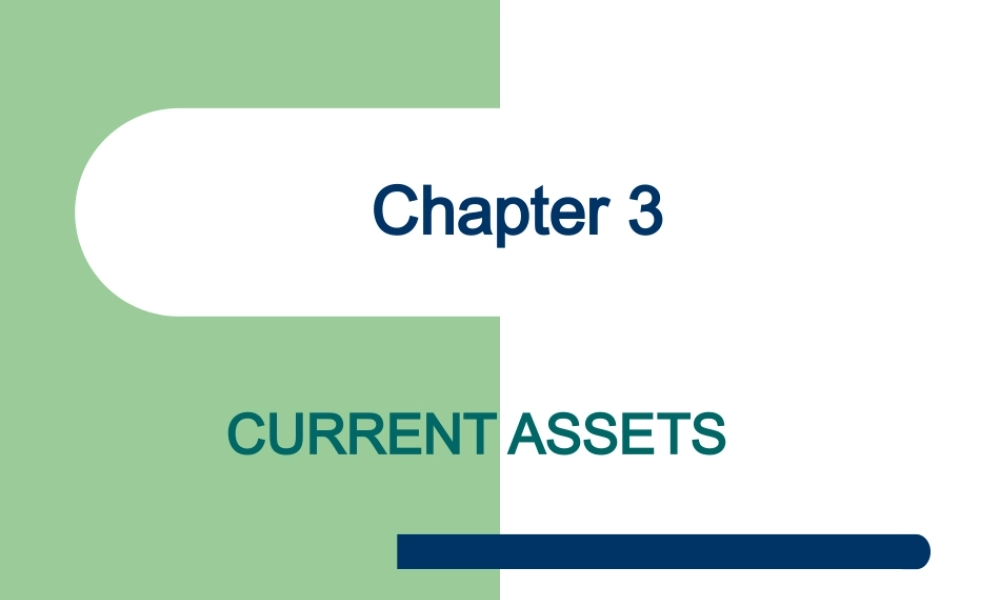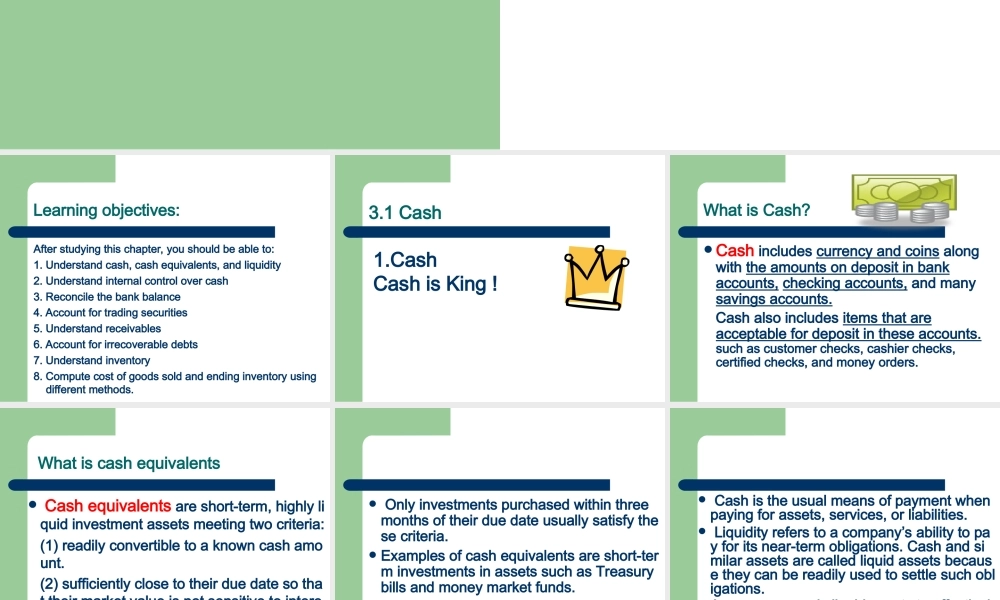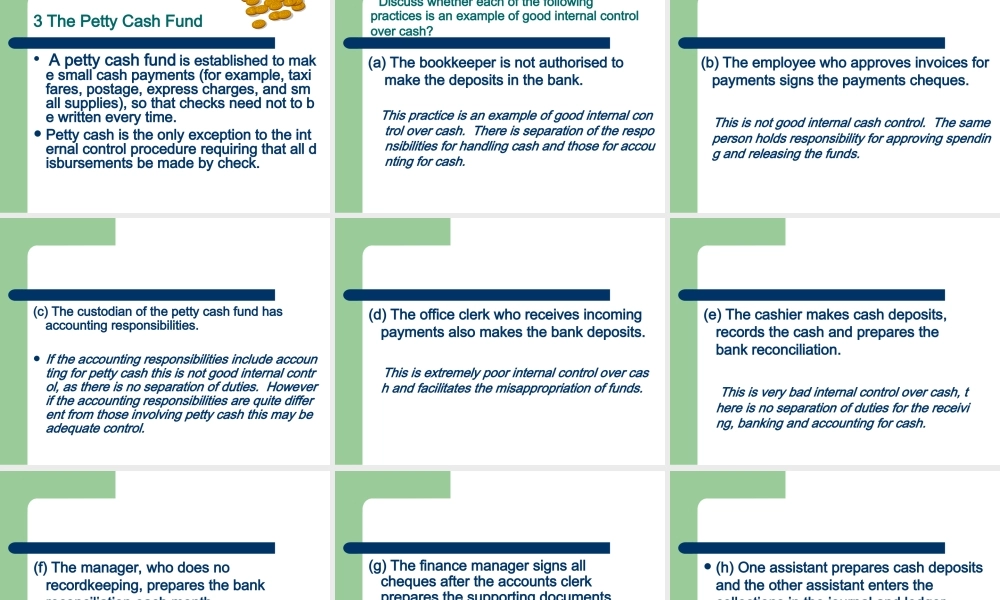Chapter 3 CURRENT ASSETS Learning objectives:After studying this chapter, you should be able to:1. Understand cash, cash equivalents, and liquidity2. Understand internal control over cash3. Reconcile the bank balance4. Account for trading securities5. Understand receivables6. Account for irrecoverable debts7. Understand inventory8. Compute cost of goods sold and ending inventory using different methods. 3.1 Cash1.CashCash is King ! What is Cash? Cash includes currency and coins along with the amounts on deposit in bank accounts, checking accounts, and many savings accounts. Cash also includes items that are acceptable for deposit in these accounts. such as customer checks, cashier checks, certified checks, and money orders. What is cash equivalents Cash equivalents are short-term, highly liquid investment assets meeting two criteria: (1) readily convertible to a known cash amount. (2) sufficiently close to their due date so that their market value is not sensitive to interest rate changes. Only investments purchased within three months of their due date usually satisfy these criteria. Examples of cash equivalents are short-term investments in assets such as Treasury bills and money market funds. Most companies combine cash equivalents with cash as a single item on the Statement of financial position. Cash is the usual means of payment when paying for assets, services, or liabilities. Liquidity refers to a company’s ability to pay for its near-term obligations. Cash and similar assets are called liquid assets because they can be readily used to settle such obligations. A company needs liquid assets to effectively operate. 2 Internal Control over Cash In accounting for cash and other...




